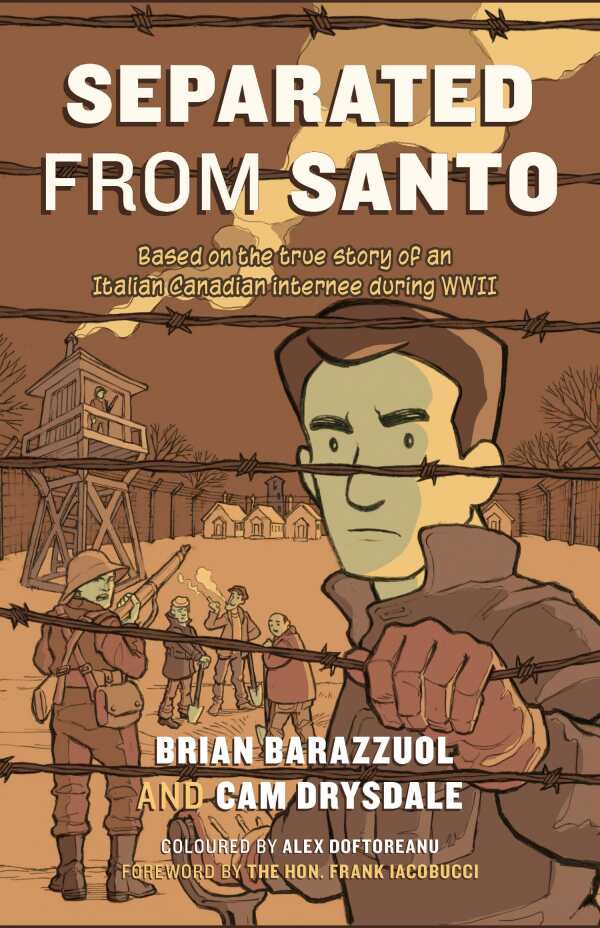Separated from Santo
The True Story of an Italian-Canadian Internee during the Second World War
A Canadian man is trapped in a government camp in the historical graphic novel Separated from Santo.
Santo Pasqualini left Italy with his wife, Alice, in 1933, fearing Mussolini’s rise to power. They arrived in British Columbia, had two children, and opened a bakery. When some regular customers insisted that Pasqualini sign a document supporting Mussolini’s efforts in Italy, he did so out of fear of losing needed business. In June 1940, that signature led to his detention as a suspected fascist.
After Pasqualini was detained, Alice was hospitalized, and their children were sent to live with different families. After two years of imprisonment, Pasqualini was released, and the family reunited. Almost fifty years later, the Canadian government made an informal apology to Italian Canadians; in 2021, a formal one followed.
Written by Pasqualini’s great-grandson, the book carries a sense of intimacy and warmth. An introductory chapter, supplemental essays, photographs, and an interview with Pasqualini’s son amplify it, and each chapter ends with a few lines from an affecting poem. When Pasqualini heads home from prison, for example, it reads: “Steel rails gleam under / Santo’s gaze, / As he returns from / broken days.”
The art emphasizes emotions, whether through a teary-eyed adult wondering about the future or young siblings saying goodbye. Most of the book is colored in sepia tones, providing a clear separation of time frames.
Separated from Santo is a moving graphic novel about a family surviving an unjustified imprisonment in Canada during World War II.
Reviewed by
Peter Dabbene
Disclosure: This article is not an endorsement, but a review. The publisher of this book provided free copies of the book to have their book reviewed by a professional reviewer. No fee was paid by the publisher for this review. Foreword Reviews only recommends books that we love. Foreword Magazine, Inc. is disclosing this in accordance with the Federal Trade Commission’s 16 CFR, Part 255.

